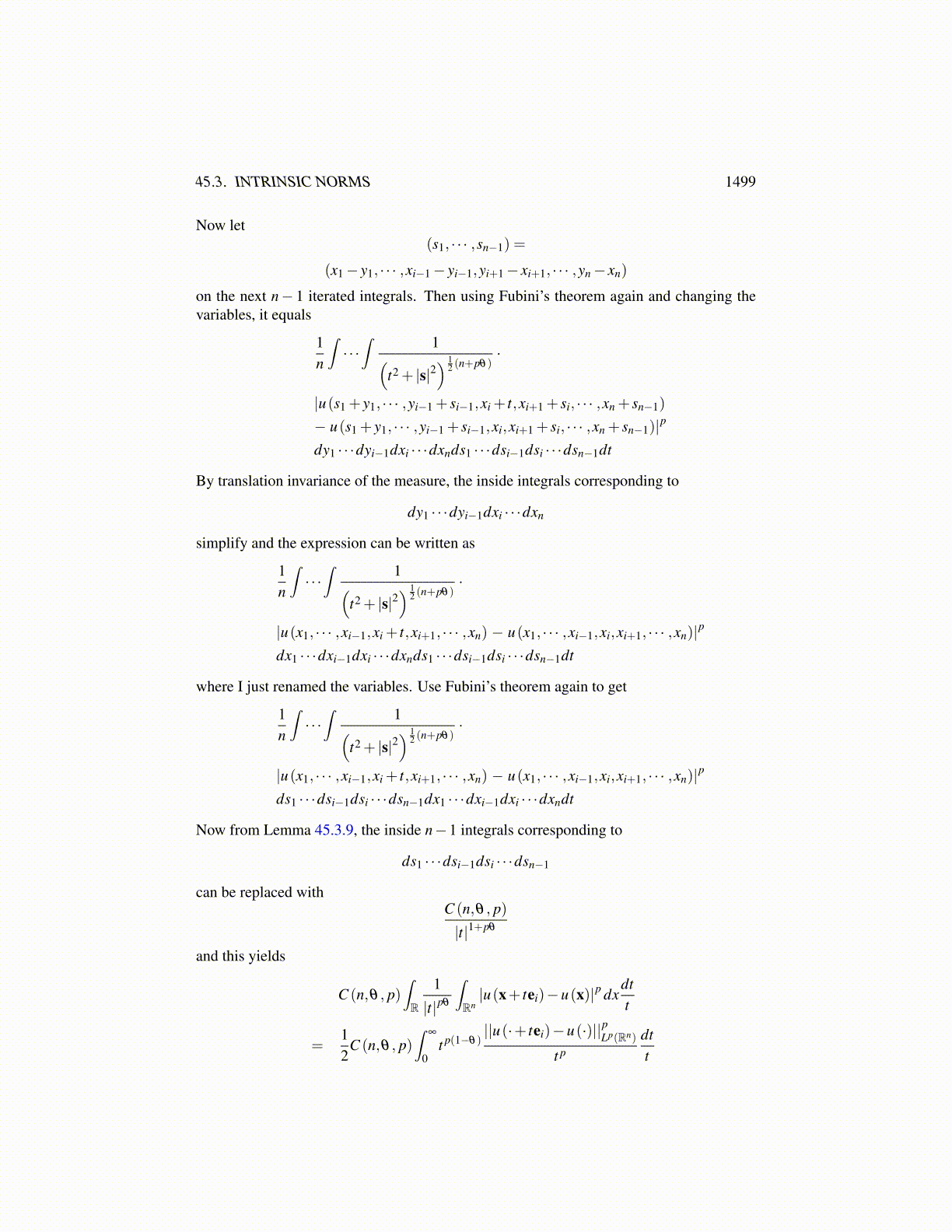
45.3. INTRINSIC NORMS 1499
where dxi refers to the first i entries and dyn−i refers to the remaining entries. From Lemma45.3.9, the complicated expression above equals
1C (n,θ , p)
12
n
∑i=1
∫∞
−∞
∫Rn−i
∫Ri
∫Rn−1
1(t2 + |s|2
) 12 (n+pθ)
|u(x1, · · · ,xi−1,xi + t,yi+1, · · · ,yn) − u(x1, · · · ,xi,yi+1, · · · ,yn)|p
dsdxidyn−idt
Now Fubini this to get
1C (n,θ , p)
12
n
∑i=1
∫Rn−i
∫Ri
∫Rn−1
∫∞
−∞
1(t2 + |s|2
) 12 (n+pθ)
|u(x1, · · · ,xi−1,xi + t,yi+1, · · · ,yn) − u(x1, · · · ,xi,yi+1, · · · ,yn)|p
dtdsdxidyn−i
Changing the variable in the inside integral to t = yi− xi,this equals
1C (n,θ , p)
12
n
∑i=1
∫Rn−i
∫Ri
∫Rn−1
∫∞
−∞
1((yi− xi)
2 + |s|2) 1
2 (n+pθ)
|u(x1, · · · ,xi−1,yi,yi+1, · · · ,yn) − u(x1, · · · ,xi,yi+1, · · · ,yn)|p
dyidsdxidyn−i
Next let
(s1, · · · ,sn−1)
≡ (y1− x1, · · · ,yi−1− xi−1,xi+1− yi+1, · · · ,xn− yn)
where the new variables of integration in the integral corresponding to ds are y1, · · · ,yi−1and xi+1, · · · ,xn. Then changing the variables, the above reduces to
1C (n,θ , p)
12
n
∑i=1
∫Rn−i
∫Ri
∫Rn−1
∫∞
−∞
1
|x−y|(n+pθ)
|u(x1, · · · ,xi−1,yi,yi+1, · · · ,yn) − u(x1, · · · ,xi,yi+1, · · · ,yn)|p
dyidy1 · · ·dyi−1dxi+1 · · ·dxndx1 · · ·dxidyi+1 · · ·dyn
Then if you Fubini again, it reduces to the expression
1C (n,θ , p)
12
n
∑i=1∫
Rn
∫Rn
|u(x1, · · · ,xi−1,yi,yi+1, · · · ,yn) − u(x1, · · · ,xi,yi+1, · · · ,yn)|p
|x−y|(n+pθ)dxdy